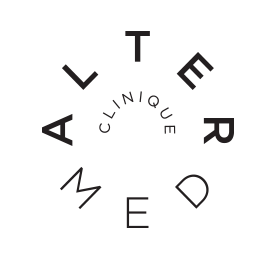Florence Charbonneau-Dufresne
Physiothérapie montréal
Effectiveness of Shock Wave Therapy
Compare to Conventional Physiotherapy
in the Treatment of Chronic Plantar Fasciitis
xx
Clinical Background
Plantar fasciitis is the most common condition for heel pain and it affects more than 1 million patients each year (Goff & Crawford, 2011). Plantar fasciitis is a pathological response of the plantar fascia in reaction to a greater mechanical stress than what the tissue can support. It usually happens after a sudden or rapid increase in weight bearing activities and result in pain at the fascia attachment under the heel. Pain is usually at its worst during the first couple of steps after being seated for a certain period of time. It lessens as the activity continues. Patients can also complain of morning stiffness under the foot, getting out of bed.
xx
Even though physiotherapy is an effective treatment for that condition, it can be quite frustrating and can take a long time to resolve. There are some Clinical Practice Guidelines in the Journal of Orthopaedic Sports Physical Therapy of 2014 (Martin et al., 2014) that recommend the use of manual therapy, stretching, taping, foot orthoses and night splints for pain relief for people with plantar fasciitis.
xx
Despite all these, sometimes patients with this chronic condition don’t seem to improve. Some medical treatments including platelet rich plasma injection and extracorporeal shock wave therapy are alternative treatments for chronic plantar fasciitis. Extracorporeal shock wave are delivered to the injured body region via an external non-invasive probe. The healing mechanism is unclear: the shock creates some inflammation in the tissue and promotes blood flow, which might help the body to reactivate inflammation process, part of the acute normal healing process. It promotes normal healing of the body by itself, instead of pathological healing. In the scientific literature, there are some evidence supporting the use of extracorporeal shock wave therapy in the treatment of chronic plantar fasciitis. A meta-analysis found that shock wave therapy seems to be effective at reducing heel pain in patient with chronic plantar fasciitis compared to no treatment (Lou, Wang, Liu, & Xing, 2017).
xx
Because of the high costs associate with extracorporeal shock wave therapy, it is important to determine if this intervention is better than conventional physiotherapy in the treatment of chronic plantar fasciitis among adults at decreasing the pain after 3 months of intervention.
xx
Best Evidence from the Literature
Multiple systematic reviews have been published about the effect of shockwave therapy on pain relief for patients with chronic plantar fasciitis compared to sham (application of a placebo pretending to deliver the intervention). However, they don’t compare the effect of extracorporeal shock wave therapy to conventional physiotherapy (Yin, 2014, Landorf & Menz, 2008).
xx
Few studies have compared the use of extracorporeal shock wave therapy and conventional treatment for pain reduction in people with chronic plantar fasciitis. The results from these studies are hard to compare as the authors don’t use the same conventional modalities (conventional physiotherapy treatment) and the results are conflictual.
xx
Some authors found that extracorporeal shock wave therapy is more effective than conventional treatment to reduce pain for patients with chronic plantar fasiitis (Ching-Jen Wang, Feng-Sheng Wang, Kuender D. Yang, Lin-Hsiu Weng, & Jih-Yang Ko, 2006, Hammer et al., 2002) and others didn’t find any difference (Grecco, Brech, & Greve, 2013).
xx
Implication for Practice, Education and Future Research
While more research is required, it is unclear if extracorporeal shock wave therapy is more effective at decreasing pain for patients with chronic plantar fasciitis compared to conventional treatment.
xx
Among the randomized control trials comparing the effectiveness of extracorporeal shock wave therapy to conventional treatment, the quality varies. Two studies that found that shock wave was better than conventional treatment had major methodological issues.
xx
In the province of Quebec, extracorporeal shock wave therapy is mostly used when conventional physiotherapy treatment haven’t worked. Few clinics offer this therapy, therefore it is needed to refer patients for this specific treatment. The costs are high, about 200 CAD each session, for a total of 3 sessions, every 2 weeks.
xx
In this review, we couldn’t prove that shock wave therapy is more effective than conventional treatment, although there was no conventional treatment identical from one study to the other.
xx
Therefore, I would recommend patients to try multiple other conventional treatment before trying shock wave therapy. Conventional treatment usually consist of massage, stretching exercises, manual therapy to optimize the whole lower body mobility, progressive strengthening program for minimum 6-12 months, and use of foot orthotics or taping to unload the fascia. In a study, (Grecco et al., 2013) it was suggested that the higher frequency of the physiotherapy sessions could explain the good results with conventional treatments. Therefore, having regular follow- up with physiotherapist is probably important in the management of chronic plantar fasciitis. This could allow the physiotherapist to readjust treatment if needed and make sure of the adherence to the treatment and habit changes on the long term.
xx
Unlike cortisone shot, shock wave therapy hasn’t been proven harmful for patients with chronic plantar fasciitis (Landorf & Menz, 2008), so it is worth trying when everything else has failed. However, make sure not to set your expectations too high with this treatment. Other study found that combination of shock wave therapy and stretching of the plantar fascia is better at decreasing pain than shock wave therapy alone (Rompe, Furia, Cacchio, Schmitz, & Maffulli, 2015).
xx
Thus maintaining the conventional physiotherapy treatments while trying the shock wave therapy might be recommended. Shock wave can be considered a supplement to the conventional treatment more than a better option by itself.
xx
References
Chew, K. T. L., Leong, D., Lin, C. Y., Lim, K. K., & Tan, B. (2013). Comparison of autologous conditioned plasma injection, extracorporeal shockwave therapy, and conventional treatment for plantar fasciitis: A randomized trial. Pm & R, 5(12), 1035-1043. doi://dx.doi.org/10.1016/j.pmrj.2013.08.590 Ching-Jen Wang, Feng-Sheng Wang, Kuender D. Yang, Lin-Hsiu Weng, & Jih- Yang Ko. (2006). Long-term results of extracorporeal shockwave treatment for plantar fasciitis. The American Journal of Sports Medicine, 34(4), 592- 596. doi:10.1177/0363546505281811 Goff, J. D., & Crawford, R. (2011). Diagnosis and treatment of plantar fasciitis. American Family Physician, 84(6), 676. Retrieved from http://www.ncbi.nlm.nih.gov/pubmed/21916393 Grecco, M. V., Brech, G. C., & Greve, J. M. D. (2013). One-year treatment follow-up of plantar fasciitis: Radial shockwaves vs. conventional physiotherapy. Clinics (São Paulo, Brazil), 68(8), 1089-1095. doi:10.6061/clinics/2013(08)05 Hammer, D. S., Rupp, S., Kreutz, A., Pape, D., Kohn, D., & Seil, R. (2002). Extracorporeal shockwave therapy (ESWT) in patients with chronic proximal plantar fasciitis. Foot & Ankle International, 23(4), 309-313. doi:10.1177/107110070202300403 Landorf, K. B., & Menz, H. B. (2008). Plantar heel pain and fasciitis. BMJ Clinical Evidence, 2008 Retrieved from http://www.ncbi.nlm.nih.gov/pubmed/19450330 Lou, J., Wang, S., Liu, S., & Xing, G. (2017). Effectiveness of extracorporeal shock wave therapy without local anesthesia in patients with recalcitrant plantar fasciitis: A meta-analysis of randomized controlled trials. American Journal of Physical Medicine & Rehabilitation, 96(8), 529-534. doi://dx.doi.org/10.1097/PHM.0000000000000666 Martin, R. L., Davenport, T. E., Reischl, S. F., McPoil, T. G., Matheson, J. W., Wukich, D. K., & McDonough, C. M. (2014). Heel pain-plantar fasciitis: Revision 2014. The Journal of Orthopaedic and Sports Physical Therapy, 44(11), A33. doi:10.2519/jospt.2014.0303 Rompe, J. D., Furia, J., Cacchio, A., Schmitz, C., & Maffulli, N. (2015). Radial shock wave treatment alone is less efficient than radial shock wave treatment combined with tissue-specific plantar fascia-stretching in patients with chronic plantar heel pain. International Journal of Surgery (London, England), 24(Pt B), 135-142. doi:10.1016/j.ijsu.2015.04.082 Yin, M. a. a. (2014). Is extracorporeal shock wave therapy clinical efficacy for relief of chronic, recalcitrant plantar fasciitis A systematic review and meta analysis of randomized placebo or active treatment controlled trials. Shanghai, China: American Congress of Rehabilitation Medicine. Wave-Therapy.aspx


